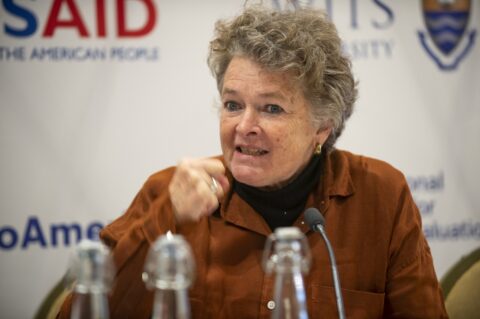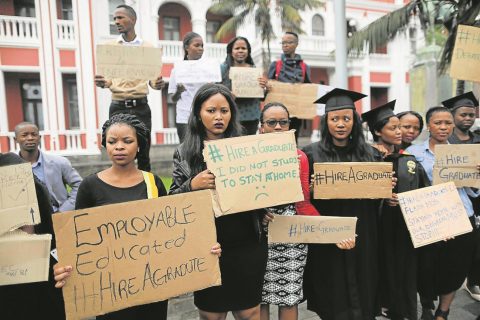SA Mining
Powerless: Counting The Cost
By: Nelendhre Moodley
SA Mining caught up with chief economist at Economic Modelling Solutions & Associate at Econometrix, Johannes Jordaan (PhD), to chat about the way forward.
The CSIR has indicated that load shedding has cost the economy around R59-billion. Apart from financially, how has load shedding impacted the economy?
The CSIR calculated the economic impact to be between R59-billion and R118bn in 2019 using a cost of unserved energy value of between R43.8 and R87.5 per kilowatt hour.
The cost of unserved energy (CUE) is used to provide an economic value due to the cost of electricity interruptions.
It must be noted that this estimated cost is usually a measure of the loss in revenue in the economy and not a loss in GDP that will be a smaller loss.
To make the point, the total electricity available for distribution in South Africa in 2019 was 227.3TWh. Using the CSIR CUE of between R43.8/kWh and R87.5/kWh, and the total electricity available for distribution, will equate to an economic value of between R9.96-trillion and R19.9-trillion.
These values can be compared to the nominal GDP in 2019 of R5-trillion.
Although difficult to estimate, the true long-term cost of load shedding can arguably be higher.
This is due to a number of factors, including the impact of a loss in investment, job losses, loss in consumer and business confidence, loss in quality of life and increasing crime during power outages.
Further impacts can include spoiling of refrigerated stock and damage to appliances or electronics, additional cost by companies and households to ease the impact of load shedding as well as the negative impact of higher electricity tariffs due to the burning of diesel and additional cost to fast-track the supply of additional electricity and maintenance.
How is the energy situation impacting mining (negatively and positively), including coal producers?
It is difficult to get meaningful trends using monthly mining data from Statistics South Africa or the Department of Mineral Resources.
During 2015, when Eskom shed 1 325GWh (according to data from the CSIR), the physical output in the mining sector grew 3.2% y-on-y.
This growth was mainly driven by increasing output in platinum group metals. This is in contrast to for example 2016 when no load shedding occurred, but mining output fell 3.7% y-on-y.
The output in the mining sector decreased 1.4% y-on-y in 2019, but a large portion of the load shedding (of 1 352GWh according to the CSIR) occurred in December when mining output increased 1.84% y-on-y.
This suggests that the impact of the intensified load shedding in December was not as severe on mining as could have been expected.
However the output of coal mining in December was the lowest since December 2002. Given that coal exports, at 6.14 million tonnes, was on par with average monthly exports, this suggests that less coal must have been mined to supply to Eskom.
Do you foresee the energy crisis being sorted out any time soon?
The current energy crisis is expected to continue for at least another 18 to 24 months.
This is due to years of neglect, insufficient maintenance and the delays in getting Medupi and Kusile completed and fully operational.
Looking at the Eskom announcement as well as the CSIR research, there seems to be a decline in the energy availability factor (EAF) to the current 67%.
This EAF is expected to worsen further, before improving, given increased planned maintenance together with continued unplanned maintenance.
It was widely welcomed that the president announced a number of initiatives during the State of the Nation Address (SONA) that will alleviate pressure on Eskom, but this will also take time to implement.
Apart from the immediate opening of window five of the Renewable Energy Independent Power Producer Procurement Programme (REIPPPP), it was announced that municipalities in good standing would be allowed to purchase energy from independent power producers. The president also announced that small-scale distributed generation of less than 1MW for own use can be generated without a licence.
Furthermore the national energy regulator will fast-track all applications by commercial and industrial users to produce their own electricity (this will be processed within 120 days) and supplementary power purchase agreements will be negotiated to get additional capacity from existing wind and solar plants.
In terms of clean coal technology, what new developments are under way?
Unfortunately coal will never be clean even though there is reference to “cleaner coal technologies”.
While coal is unfortunately also a dirty business when looking at the environmental impact during mining and the transportation of coal, clean coal technology refers mostly to technologies that reduce carbon dioxide emissions.
Such technologies refer mainly to the carbon capture and sequestration (or storage) (CCS). This entails a process in which CO2 is trapped and kept out of the atmosphere by forcing the gas into suitable underground formations.
However the technology is expensive and is not yet mainstream, given that there are currently only 21 CCS plants in the world.
While CC can effectively capture around 90% of the CO2 produced at power plants, critics will point to the fact that there are so many pollutants in coal that it is impossible to capture all of them (including mercury and nitrogen oxide).
The South African Centre for Carbon Capture and Storage (SACCCS) is doing research on carbon capture in SA.
It compiled the Carbon Geological Storage Atlas in 2009 and had goals to commence a test-injection project in 2017 and a demonstration plant in 2020.
Although these timelines have been delayed, the introduction of the Carbon Tax Bill in 2019 can renew focus on CCS.
Their Pilot Carbon Storage Project (PSCP) involves the injection, storage and monitoring of 10 000 to 50 000t of CO2.
What advice do you have for the average South African frustrated by the power challenges?
While it is important to keep in mind that the shortage of electricity and the impact on the economy is a self-inflicted crisis due to bad planning, poor policies, reckless spending and a lack of execution, there is not much one can do in the short term.
The government has eventually realised the negative impact and is working on improving the situation, but this will take time.
Given the energy-related initiatives mentioned by the president in the SONA, and given continued decreases in renewable energy prices, it is a good time for businesses and more affluent households to start thinking about doing cost-benefit analysis on especially PV Solar technologies.
Progress of the REIPP programme, after initially moving apace, has slowed down. Are you able to give a view of what is currently happening in this space?
President Cyril Ramaphosa in his State of the Nation Address confirmed the immediate opening of window five of the Renewable Energy Independent Power Producer Procurement Programme.
How is government intervention assisting Eskom in stabilising power supply?
After 10 chief executive officers in the past decade, the government appointed André de Ruyter as Eskom’s CEO from the beginning of the year.
This is seen as a positive step given the new CEO’s experience and everybody hopes that he can remain in this position without too much government interference.
The government has also provided R69bn over the period 2019 to 2021 to stabilise Eskom’s financials, given a debt burden of R450bn.
However the National Energy Regulator of South Africa has argued as part of the fourth multiyear price determination decision that this financial injection by government is to support lower tariffs and this will put Eskom’s financials under strain.
Although the high court must still listen to the merits of this case, further government support could be required if Eskom is not allowed to charge cost-reflective tariffs.
What advice would you have for the new Eskom CEO?
It is important to eliminate corruption at Eskom as soon as possible and support all efforts to bring employees or contractors found guilty of corruption to book.
It will be important to make an example of them. It is no good to just dismiss culprits or provide them with a golden handshake given that such behaviour will only entrench corruption; if not at Eskom, at other enterprises.
Improve the general level of skills of employees and bring back experienced employees to assist with the maintenance programme.
Bring down costs. This can be done in a number of ways, including reducing the wage bill, increasing overall productivity, increasing supply of electricity as quickly as possible, and by increasing the share of long-term cost plus coal supply contracts.
Improve the quality and frequency of information on expected medium-term and long-term load shedding to users.
This can for example be to provide monthly updates on expected medium- and long-term load shedding. This will give electricity users and especially businesses information to improve decision making.






 Sign-up and receive the Business Media MAGS newsletter OR SA Mining newsletter straight to your inbox.
Sign-up and receive the Business Media MAGS newsletter OR SA Mining newsletter straight to your inbox.